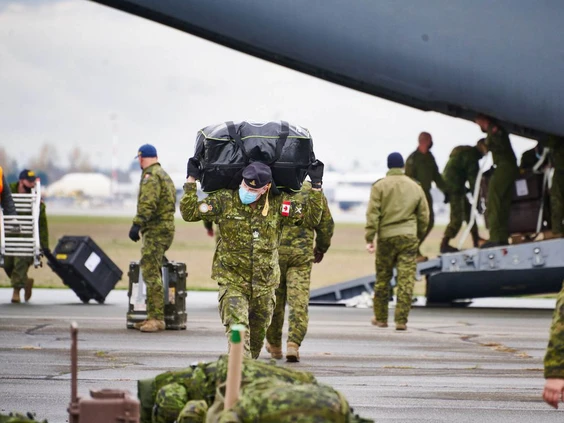
“There’s no life like it,” the recruiting ads used to say.
But the military life appears to be a less attractive option for Canadians these days.
In January, the Department of National Defence reported that the Canadian Armed Forces were shy of their 100,000-member ideal by about 12,000 regulars and reservists at the end of November 2021.
That shortfall has grown by 5,000 since the same period in 2020, when the pandemic forced the closures of recruiting centres and training schools and pushed the deficit to 7,000 (2,000 regular force members and 5,000 reservists).
The federal government has authorized a CAF complement of 71,500 regular force members and 30,000 part-time reservists. The figures are based on available funding and military commitments.
COVID-19 is partly to blame for the most recent enlistment shortfalls. After the federal and provincial pandemic closures, the military could only provide basic training to about a quarter of the expected number of new hires.
The public health crisis only exacerbated a problem that has plagued Canada’s military for years, particularly since it pulled the last of its troops out of Afghanistan in 2014.
In 2016, federal auditor general Michael Ferguson warned personnel shortages could heap more burden on those in uniform and hurt military operations.
In 2017, the government promised to expand the ranks in the face of growing global instability and emerging threats. Those issues have continued to grow in the last five years, while the Canadian military has failed to meet recruitment targets.
The recruiting challenge has contributed to a push to make the Forces more inclusive as it tries to attract women, racialized people, Indigenous Peoples and members of the LGBTQ2 community.
Factors other than COVID-19 are also at work.
Overseas duties have been scattered since DND ended almost 12 years of high-profile action in Afghanistan. The military has been burdened with more crisis-response missions at home and invested the bulk of its foreign operations in NATO efforts to discourage Russian aggression among former Soviet republics along the Baltic Sea.
United Nations deployments have dwindled to virtually nothing, with just 59 uniformed Canadians on peace operations in six hot spots at the time the recruitment report was filed—five in Africa and one in the Middle East.
Canada pulled about 200 soldiers out of Ukraine before Russian troops invaded the country on Feb. 24. Canadians had been training Ukrainian military forces since 2015.
Ottawa extended the deterrence mission in Latvia and was deploying an additional 460 Canadian troops to help NATO in Europe, including an artillery unit, a naval frigate and a surveillance aircraft.
The pledge came days after Defence Minister Anita Anand acknowledged concerns about stretching the military too much given its existing commitments, aging equipment and the growing shortage of personnel.
Retired lieutenant-general Guy Thibault, a former vice-chief of the defence staff, has said the emerging crisis in eastern Europe may well force Canada to reassess its other missions.
Those issues have continued to grow in the last five years, while the Canadian military has failed to meet recruitment targets.
Then there is the litany of high-profile sexual misconduct cases that began in 2018 with the outgoing chief of the defence staff, General Jonathan Vance, revelations that appeared to open a floodgate of allegations against Forces’ brass.
The Canadian military has struggled at the best of times to boost the number of women in its ranks and, under Vance, set a goal of one-quarter female members by 2026.
As of last September, that figure stood at 15 per cent, and an internal study suggested National Defence needs to recruit around 3,500 women a year to meet its target.
Advertisement












